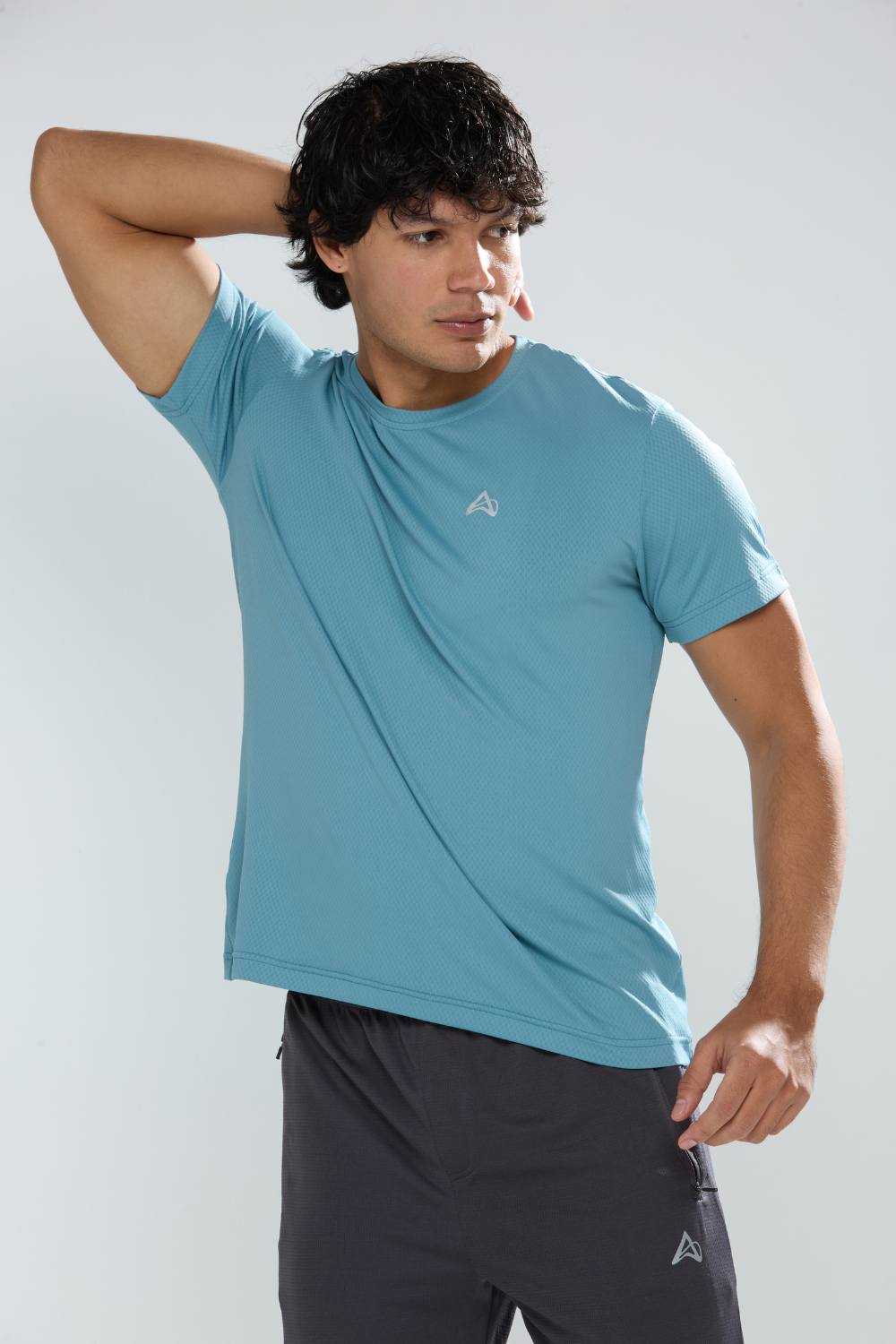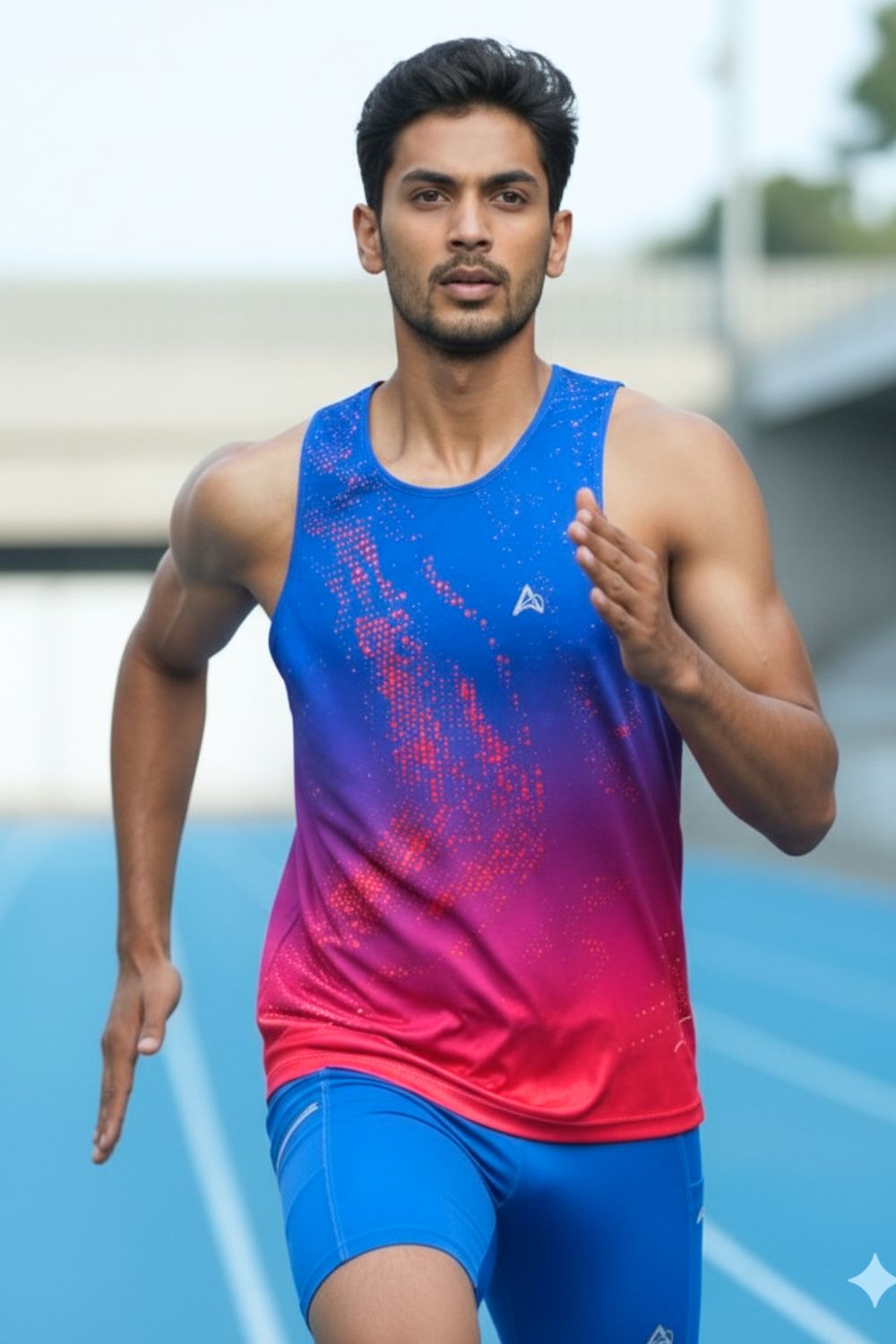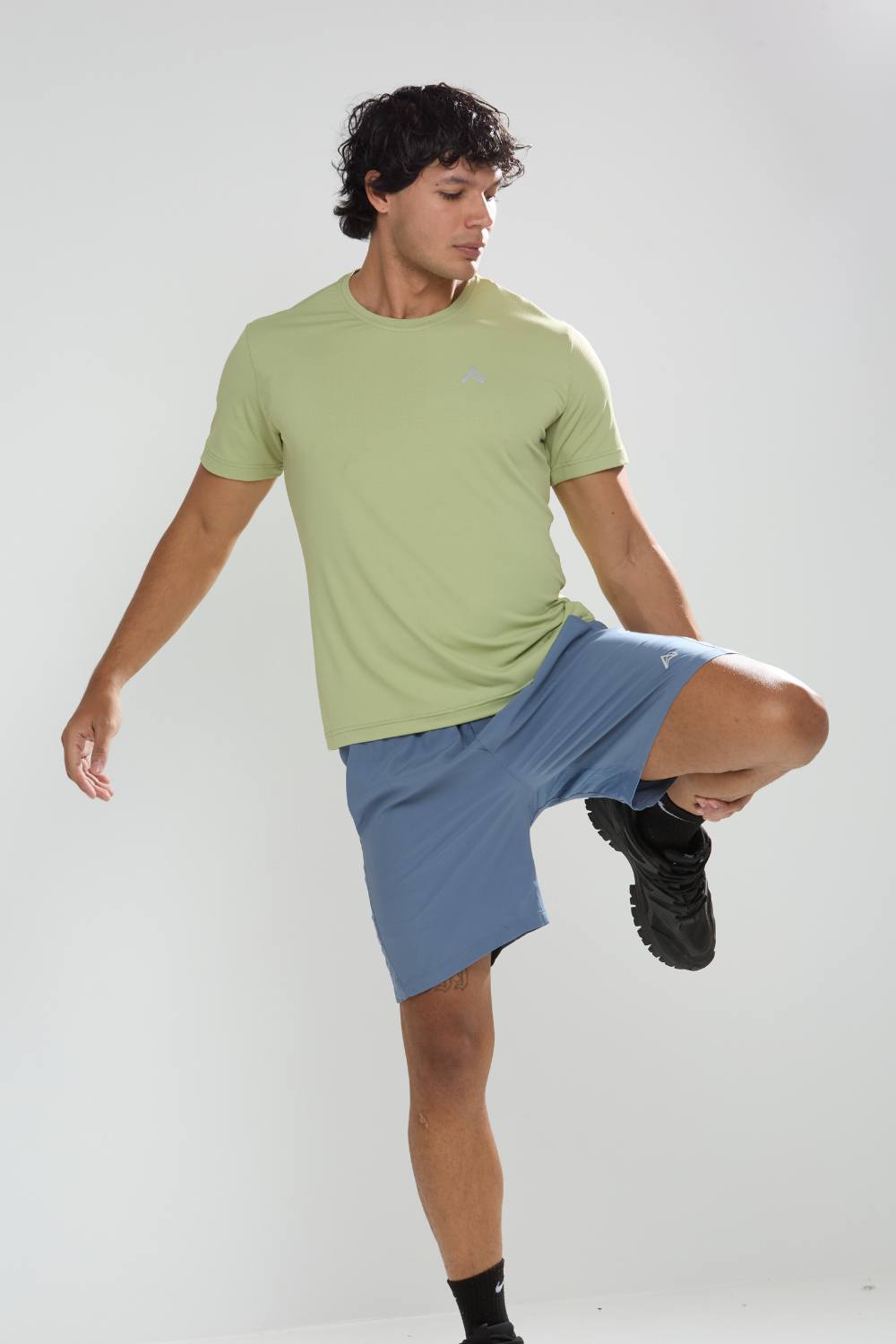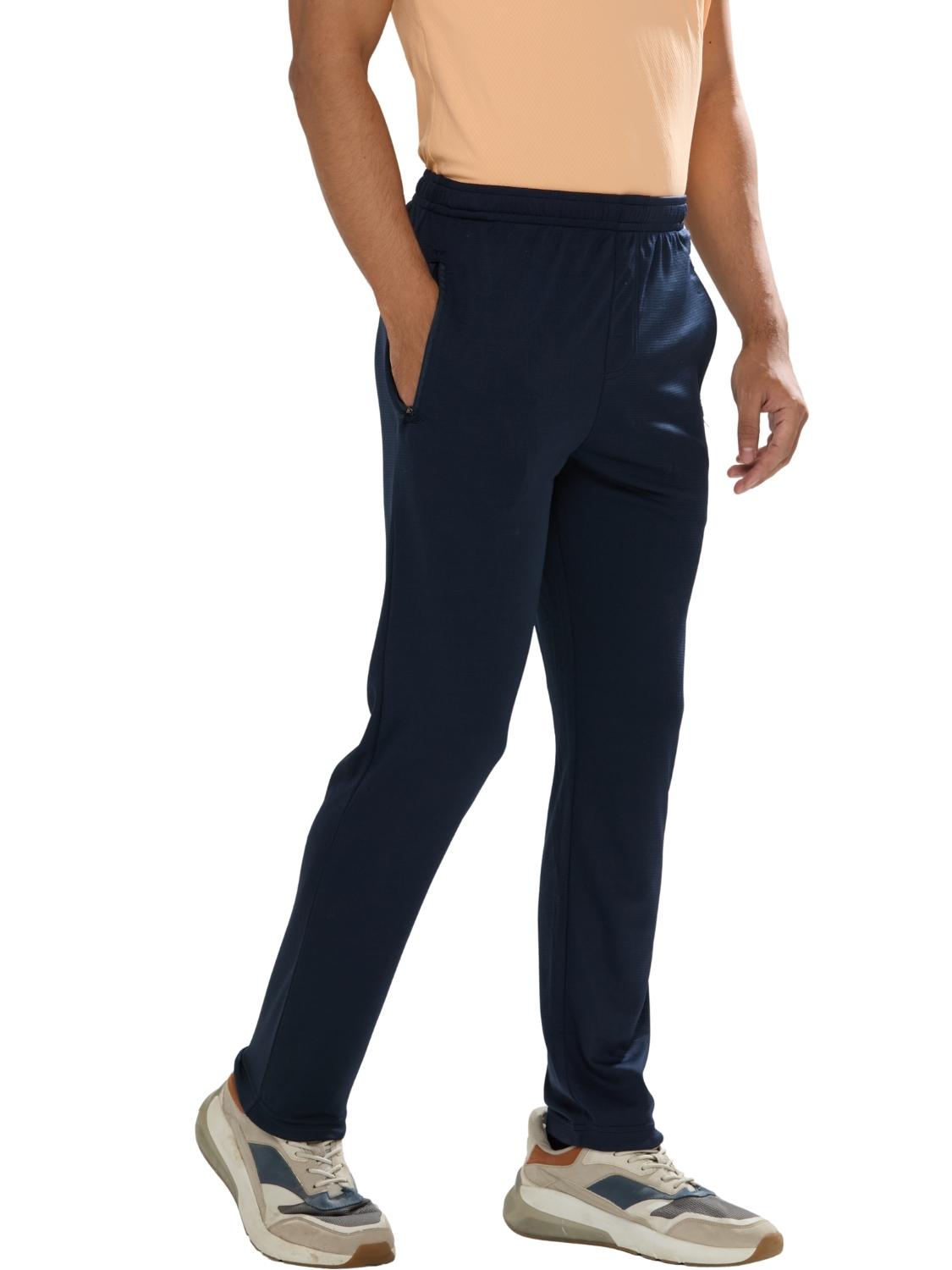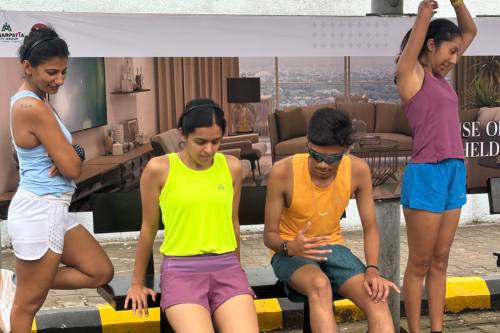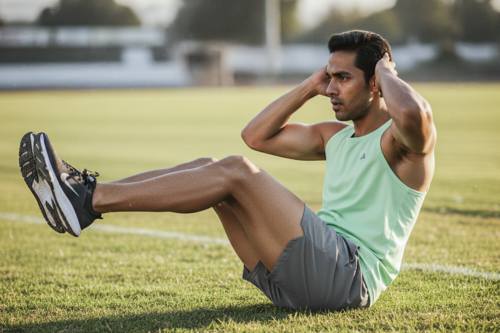Quick Listen:
Imagine pounding the pavement in Mumbai's relentless downpour, your shirt clinging like a second skin, every step a soggy reminder that the monsoon doesn't care about your training schedule. For runners across India's bustling cities from the humid haze of Bangalore to the sticky streets of Delhi the rainy season turns a simple jog into a battle against the elements. But what if your gear could fight back? In How Moisture-Management Fabrics Combat Monsoon Challenges for Indian Runners, we dive into the fabrics that keep you moving, dry, and focused when the skies open up. The Science of Staying Dry and Comfortable: Understanding the Role of Performance Fabrics for Runners During the Indian Monsoon.
Tired of gear that slows you down? Chafing, soggy fabrics, and missing pockets kill your run's momentum. At Aguante, we're runners who get it. Our high-performance activewear features moisture-wicking fabrics, ergonomic designs, and smart storage to keep you focused. Shop Now!
Setting the Scene
The monsoon arrives in India like an uninvited guest who overstays their welcome drenching everything in sight, spiking humidity to unbearable levels, and turning sidewalks into slippery hazards. In cities like Hyderabad and Pune, where runners squeeze in miles before dawn or after dusk, the rains don't just wet your shoes; they test your resolve. Sweat mixes with rain, fabrics sag under the weight of moisture, and suddenly, that half-marathon prep feels more like survival training.
Yet, amid this seasonal chaos, a quiet revolution brews in the world of activewear. Runners are ditching soggy cotton tees for smart fabrics that wick away moisture faster than you can say "Pune puddle." These aren't gimmicks; they're game-changers, born from the very conditions that plague Indian roads. Breathable, lightweight, and engineered for the tropics, they promise to keep you cool when the mercury and the wet climbs. As the India textile market swells to USD 178.26 billion in 2024, hurtling toward USD 307.80 billion by 2030 at a brisk 9.73% CAGR, it's clear: demand for performance gear tailored to local realities is surging, fueled by a booming fitness scene and e-commerce boom. For urban warriors in Surat or Ahmedabad, choosing the right kit isn't luxury it's essential.
Emerging Trends in Activewear for Runners
Walk into any running group chat on Instagram or Facebook those hubs where Hyderabad's early birds swap route tips and you'll spot the shift. No longer content with imported brands that wilt in Indian heat, runners crave gear built for the here and now. Enter local innovators like Aguante, crafting activewear that hugs the curves of monsoon mayhem without breaking the bank.
At the heart of this trend? Moisture-management fabrics, the unsung heroes pulling double duty in a market projected to grow from USD 146.55 billion in 2024 to USD 213.51 billion by 2033, clocking a steady 3.85% CAGR. These aren't your grandma's linens; think hydrophobic threads that shuttle sweat outward, mesh panels that whisper air through the humidity, and stretchy blends that move with you, not against. In Navi Mumbai's coastal drizzle or Gurugram's urban sprawl, where a sudden shower can ambush your stride, such details mean the difference between a focused run and a frustrated quit.
The buzz extends beyond borders. Globally, the moisture-wicking fabrics sector hit USD 4.16 billion in 2024 and eyes USD 5.09 billion by 2032, growing at 4.1% CAGR, thanks to skyrocketing fitness awareness and a thirst for outdoor pursuits. In India, this translates to apparel that doesn't just look good on YouTube finish-line videos it performs. Brands are layering in sustainable twists, like recycled polyester that wicks as well as it saves the planet, aligning with the rising call for eco-friendly threads amid urbanization's sprawl.
Real-World Applications: How Moisture-Management Fabrics Help
Let's break it down: You're mid-run in Bangalore's pre-monsoon tease, humidity hovering at 90 percent, and your body starts its own rain dance sweat pouring, threatening to chafe and slow you down. Enter moisture-wicking magic. These fabrics, often polyester-heavy for their quick-dry prowess, use capillary action to yank liquid from your skin to the surface, where it evaporates in a flash. No more swampy shirts; just a dry layer that lets your muscles breathe.
Take Aguante's lineup they've nailed the Indian runner's wishlist. Secure pockets that hug your phone without bouncing over potholes, anti-chafing liners that glide through Gujarat's gritty trails, and reflective strips that glow under Delhi's evening drizzle. Runners in Pune's group runs rave about how these pieces keep essentials close and distractions at bay, turning a drenched dash into a deliberate pace. It's not theory; it's tested on real roads, from Mumbai's Marine Drive sloshes to Hyderabad's hill sprints.
And the science stacks up. Polyester dominates the fiber game, holding the lion's share in 2023, while blends with spandex add that forgiving stretch for lunges and leans. In activewear applications think tees, shorts, sports bras these materials shine, pulling from a global pool segmented across men's, women's, and kid's gear. Picture crossing that finish line in Ahmedabad, not bogged down by bulk, but buoyed by breathability. That's the real-world win.
Key Challenges in the Monsoon for Indian Runners
The monsoon doesn't play fair. One minute, you're cruising Gurugram's greenways; the next, a cloudburst has you navigating ankle-deep floods, humidity turning every exhale into a steam bath. Sweat soaks in, rain adds insult, and boom chafing rears its ugly head, raw skin screaming with each stride. Worse, that perpetual damp invites uninvited guests: bacteria thriving in the warmth, fungi feasting on forgotten socks, leading to itches that linger long after the run.
Unpredictability amps the frustration. In Surat's sudden squalls or Pune's lingering mists, weather apps lie, and your resolve wavers. Performance dips as discomfort climbs focus fractures, pace falters. It's a vicious cycle: more sweat from effort, more cling from fabric, more misery overall. For Delhi's dawn patrollers or Mumbai's midnight milers, these hurdles aren't abstract; they're the barriers between consistency and couch-surfing.
Yet, here's the rub: Traditional gear exacerbates it all. Cotton absorbs like a sponge, holding onto moisture for hours, while stiff synthetics restrict flow. Runners know the drill post-run wardrobe malfunctions, endless laundry cycles. In a nation where textile exports alone topped USD 34.43 billion in 2024, bound for USD 100 billion by 2030, the irony stings: abundant fabrics, yet so few tuned to this tropical tango.
Opportunities and Impact for Brands and Businesses
For brands eyeing India's runner boom, the monsoon is less curse, more canvas. Aguante gets it designing for desi conditions, from heat-trapping humidity to terrain that twists like a monsoon wind. Their gear, priced honestly against flashy imports, packs global punch: moisture-wicking weaves that dry in Delhi's doozies, pockets that secure gels on Hyderabad's humps. It's local smarts meeting worldwide standards, carving a niche in a market buzzing with middle-class miles and urban energy.
The payoff? Runners log more laps, unhindered by itch or sag. Brands like these foster loyalty think Instagram stories from Navi Mumbai tracks, YouTube breakdowns of Bangalore beats turning one-off buys into lifelong kits. Businesses win big: efficiency spikes as athletes train distraction-free, sales soar with e-commerce's easy reach, and innovation loops in, from anti-odor tech to sustainable spins that nod to eco-trends. In a sector employing millions, from Ahmedabad artisans to Tirupur mills, this focus on function fuels jobs and exports alike.
For runners, the impact ripples deeper. Less downtime means sharper splits, bolder goals. In Pune's parks or Surat's circuits, gear that grips the grind empowers the everyday athlete to chase personal bests, rain be damned.
Expert Insights and Future Outlook
Peering ahead, the fabric frontier gleams with promise. Innovations like biometric-infused wicks tracking hydration mid-stride or graphene-treated threads for ultimate durability are already trickling in, as seen in recent launches blending moisture management with smart tech. For Indian runners, this means gear evolving with the climate: tougher against monsoons, greener for the globe, all while staying affordable and attuned to bodies built for spice and sprint.
Experts point to a horizon where direct-to-consumer channels dominate, putting these wonders at your doorstep via apps and feeds. As the market matures polyester paving the way, blends broadening appeal the message rings clear: Invest in what works, tested on your turf.
So, next time thunder rumbles over Mumbai or mist blankets Bangalore, lace up with intent. Opt for Aguante's monsoon-ready marvels, forged for Indian fire er, water. Because in the end, running isn't just about miles; it's about momentum, unbroken by the pour. Grab your kit, hit the wet, and let the fabrics do the heavy lifting. Your stride and your story awaits.
Frequently Asked Questions
What are moisture-wicking fabrics and how do they help runners during India's monsoon season?
Moisture-wicking fabrics are specially engineered materials, typically polyester-based, that use capillary action to pull sweat away from your skin to the fabric's surface where it evaporates quickly. During India's humid monsoon season, these fabrics prevent the uncomfortable clinging of wet clothes, reduce chafing, and help maintain body temperature, allowing runners to stay comfortable and focused even in 90% humidity conditions common in cities like Bangalore and Mumbai.
Why should Indian runners choose moisture-management activewear over traditional cotton clothing?
Traditional cotton absorbs moisture like a sponge and holds onto it for hours, creating a heavy, uncomfortable experience that can lead to chafing and bacterial growth. Moisture-management fabrics dry quickly, stay lightweight even when wet, and include features like anti-chafing liners, secure pockets, and breathable mesh panels specifically designed for India's challenging climate conditions from Delhi's urban sprawl to Pune's coastal humidity.
What specific features should Indian runners look for in monsoon-ready running gear?
Indian runners should prioritize activewear with polyester-spandex blends for quick-drying and flexible movement, secure pockets that won't bounce during runs over uneven terrain, anti-chafing technology for comfort during long distances, and reflective strips for visibility during early morning or evening runs in monsoon conditions. Brands like Aguante design gear specifically tested on Indian roads, addressing real challenges from Mumbai's Marine Drive to Hyderabad's hill sprints.
Disclaimer: The above helpful resources content contains personal opinions and experiences. The information provided is for general knowledge and does not constitute professional advice.
You may also be interested in: Breathable Singlets Support Long-Distance Training
Tired of gear that slows you down? Chafing, soggy fabrics, and missing pockets kill your run's momentum. At Aguante, we're runners who get it. Our high-performance activewear features moisture-wicking fabrics, ergonomic designs, and smart storage to keep you focused. Shop Now!
Powered by flareAI.co





